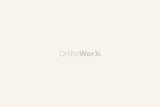Economic Clusters—Trendy in Economic Development, Well-established Here
e-Newsletter Articles
Posted by: OrthoWorx Indiana
14 years ago
April 2011: OrthoWorx eNewsletter
 Welcome to the OrthoWorx eNewsletter. We’re pleased that you’ve expressed an interest in learning more about our work and about the orthopedic industry cluster that is the reason for our organization.
Welcome to the OrthoWorx eNewsletter. We’re pleased that you’ve expressed an interest in learning more about our work and about the orthopedic industry cluster that is the reason for our organization.
As you may know if you’ve gone so far as to opt in to our eNewsletter, the OrthoWorx initiative was founded in 2009 out of a study by BioCrossroads with generous funding from the Lilly Endowment. Our purpose is to foster collaboration among the orthopedic industry and community stakeholders in order to make the Warsaw region even more—more attractive as a place to operate an orthopedic company, big or small; more successful in preparing individuals for careers in orthopedics; more appealing to those the industry recruits to the area; and more supportive of the region’s economy at large.
If it’s possible for something to be trendy in a field such as economic development, then clusters are trendy. Regions, states and communities are focusing their efforts around building clusters or building on ones that already exist. For good reason, too. Professor Michael Porter of the Harvard Business School, considered the father of modern economic cluster theory, says “the enduring competitive advantages in a global economy lie increasingly in local things—knowledge, relationships, motivation—that distant rivals cannot match.”
While clusters are a hot topic today, Porter identified Warsaw as a cluster in a 1998 issue of the Harvard Business Review in an article titled “Clusters and the New Economics of Competition.” The article further identified “Exporting Clusters,” which export products outside the cluster’s local area. “The demand for local industries is inherently limited by the size of the local market,” Porter wrote, “but exporting clusters can grow far beyond that limit.”
The Warsaw orthopedic industry cluster has certainly grown far beyond that limit. With more than $11 billion in annual sales generated by local companies, the cluster accounts for nearly one-third of the world’s orthopedic sales volume.
Warsaw’s concentration of medical device jobs is unequalled. A recent study by the Indiana Business Research Center at the IU Kelley School of Business found that the region had a “location quotient” of 80, meaning that the industry’s employment is 80 times more concentrated locally than it is nationally. The second most concentrated county in the U.S. (also in Indiana, interestingly) has a location quotient less than half of Kosciusko’s.
The same study found that the combined direct and indirect effects of the industry cluster account for 13,000 jobs in Kosciusko County, which is nearly 43% of the county’s total employment. So, our cluster credentials are impeccable.
What the Warsaw region has not had historically is any organized structure or strategy around preserving or expanding the economic opportunity represented by the cluster. In 2010, OrthoWorx applied for a contract under a Small Business Administration program aimed at advancing “Regional Innovation Clusters.” While it was clear (to us, certainly) that our cluster was as innovative and as concentrated as any of the awardees, we were not successful because, among other factors, the Warsaw region was not thought to have a mature organization that unified cluster members.
The creation of the OrthoWorx initiative in 2009 was meant to cure that defect…to be the organizing element that fosters collaboration among industry and community in order to leverage our unprecedented assets and to assemble the resources necessary to address any obstacles.
Professor Porter said that clusters affect competition in three broad ways. They are:
“First, by increasing the productivity of companies based in the area; second by driving the direction and pace of innovation, which underpins future productivity growth; and third, by stimulating the formation of new businesses, which expands and strengthens the cluster itself.”
We look forward to using this newsletter and other forums to keep you abreast of our activities and progress, and to raise issues of importance to the cluster. We’ll also spotlight examples of the way the cluster contributes to our community, not just in jobs or economic output, but also by the skills, talent and commitment of the people who make up the orthopedic industry cluster.
Categories:
You May Be Interested In:

Lilly Endowment Funding to Orthopedics Capital Foundation to Help Continue Educational and Charitable Work of OrthoWorx
3 years ago by OrthoWorx Indiana

Notre Dame Students See Opportunities in Medical Device Industry
3 years ago by OrthoWorx Indiana

OrthoWorx joins with Education Partners to Boost Higher Academic Achievement for Select Students
4 years ago by OrthoWorx Indiana

ACCELINX EXPANDS ITS EXPERTISE
5 years ago by OrthoWorx Indiana
Get Involved with OrthoWorx
Join us in advancing the Orthopedic Capital of the World®. Connect with OrthoWorx today to learn more and become part of our mission.